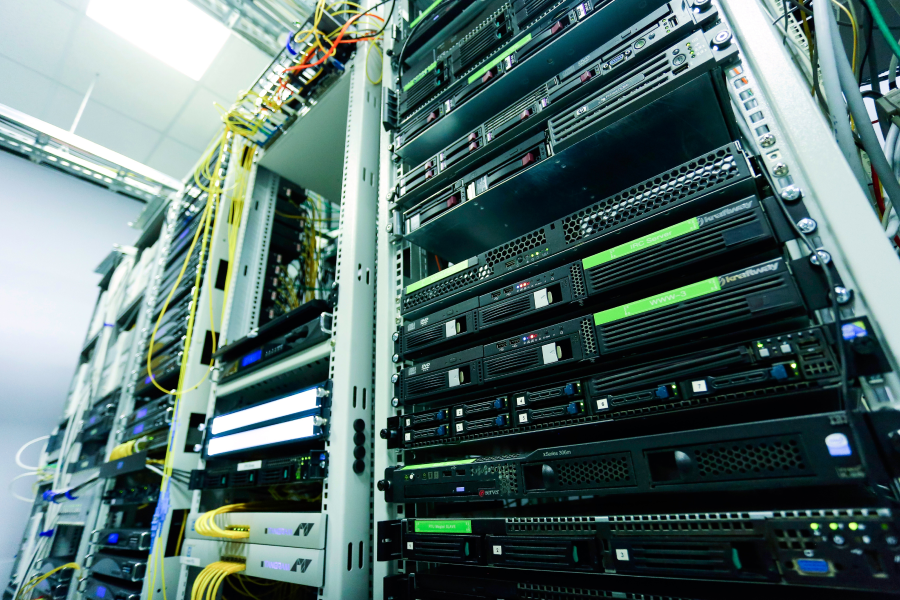The role of IT architecture is to facilitate seamless, secure access to corporate applications and data. Depending on the layout of the various applications, the elements of the corporate network and the storage service, the configuration will vary. LMSYS designs and implements your entire information system in line with your business needs or project requirements.
We believe that information system architecture should be driven by your business practices and the way you organize your activity, rather than imposing technical constraints that complicate the running of your business.

That’s why we design your IS architecture based on your corporate strategy and business vision, and deploy software solutions (application layer) on dedicated infrastructures (technical, physical or virtual layer).
If required, we can also handle the migration of your solutions and the associated managed services.
Traditional infrastructure
Installed on site (known as an On-premise solution), this type of infrastructure configuration is dedicated exclusively to private use, and therefore only to the company. This “classic” IT infrastructure includes all the company’s hardware (workstations, servers, routers, peripherals) and software, and therefore requires more space.
Hyperconvergence
erconvergence is a type of IT architecture in which the infrastructure combines server computing resources, storage and networking into a single, single-tier system, unlike conventional infrastructures which organize these components into 3 distinct tiers. Deployed on standardized hardware, hyperconverged infrastructure (HCI) combines simplification and flexibility, enabling linear infrastructure growth by increasing computing resources in line with business needs (known as scalability). This architecture also optimizes datacenter space and reduces energy consumption.
High availability
The unavailability of IT services and resources can become critical for certain businesses or applications. This is particularly the case in the industrial sector, where production lines may come to a standstill, but also for online payment services. It is therefore sometimes necessary to opt for a high-availability architecture. This can be ensured by hardware redundancy, which consists of creating a clustered infrastructure in which all physical elements are duplicated to take over in the event of failure. Preventive or adaptive techniques and processes can also be put in place (control and monitoring outlis, downgrading, “hot” restarting of services, securing data and backups, etc.).
Edge Computing
With the ever-increasing volumes of data generated by businesses, and its instantaneous use (often combined with AI tools), it’s becoming particularly relevant to process data as close to the source as possible. This avoids the need to send large quantities of data for processing to a remote datacenter, and delivers valuable gains in processing time, latency being a critical factor for certain processes or real-time applications. Edge computing is therefore a complementary infrastructure to cloud computing, focusing more on large-scale data processing and storage.
Cloud infrastructure
Cloud computing is the delivery of computer services (including servers, storage, databases, network management, software, analytics tools, and monitoring) over the Internet (the cloud) with the aim of accelerating innovation, providing flexible resources, and benefiting from economies of scale. Typically, you only pay for the cloud services you use (thereby reducing your operational costs), manage your infrastructure more efficiently, and scale services according to your business needs.
In a cloud infrastructure, all the elements of your infrastructure are leased to a provider and accessible via the internet. Since the hardware resources of the infrastructure are not on-site, they are accessed through virtualization.
Virtualization is a technology that allows you to create multiple environments or resources from a single physical system. Virtualization software (called a hypervisor) allocates physical computer resources to each virtual machine (VM) and enables multiple VMs to run on the same physical server. There are open-source virtualization environments such as Proxmox VE (based on the KVM hypervisor) and proprietary ones like VMWare ESXi.
Private/public/hybrid cloud
Within cloud infrastructures, a distinction is made between public and private clouds, when your IT resources are shared between several organizations and accessible via the Internet. A private cloud, on the other hand, refers to resources dedicated solely to your organization (whether physically hosted on your premises or virtualized by a third-party provider). In a hybrid cloud, resources and applications are mobilized from a combination of different cloud environments. All these types of infrastructure are variants of cloud computing; the term GPU computing is sometimes used to describe the combination of graphics resources with traditional computing elements.
